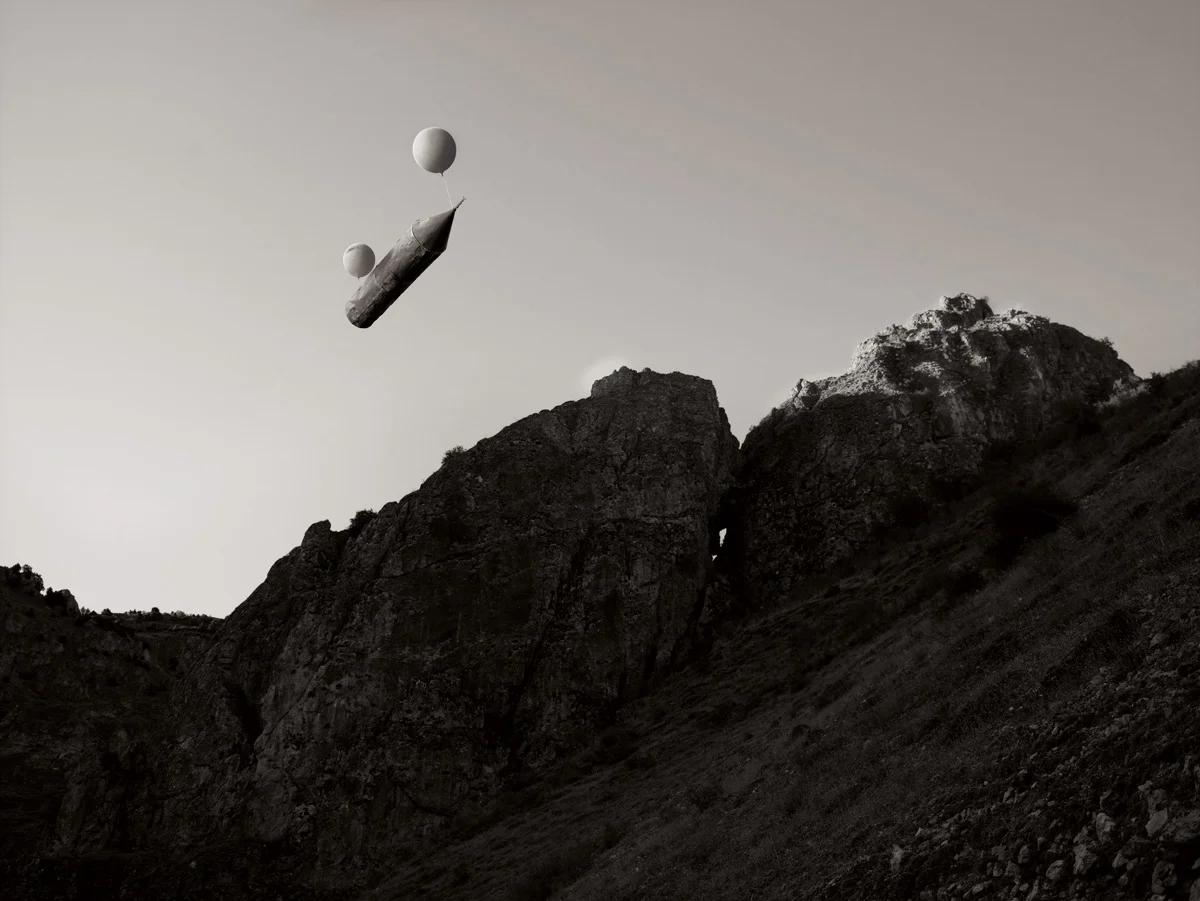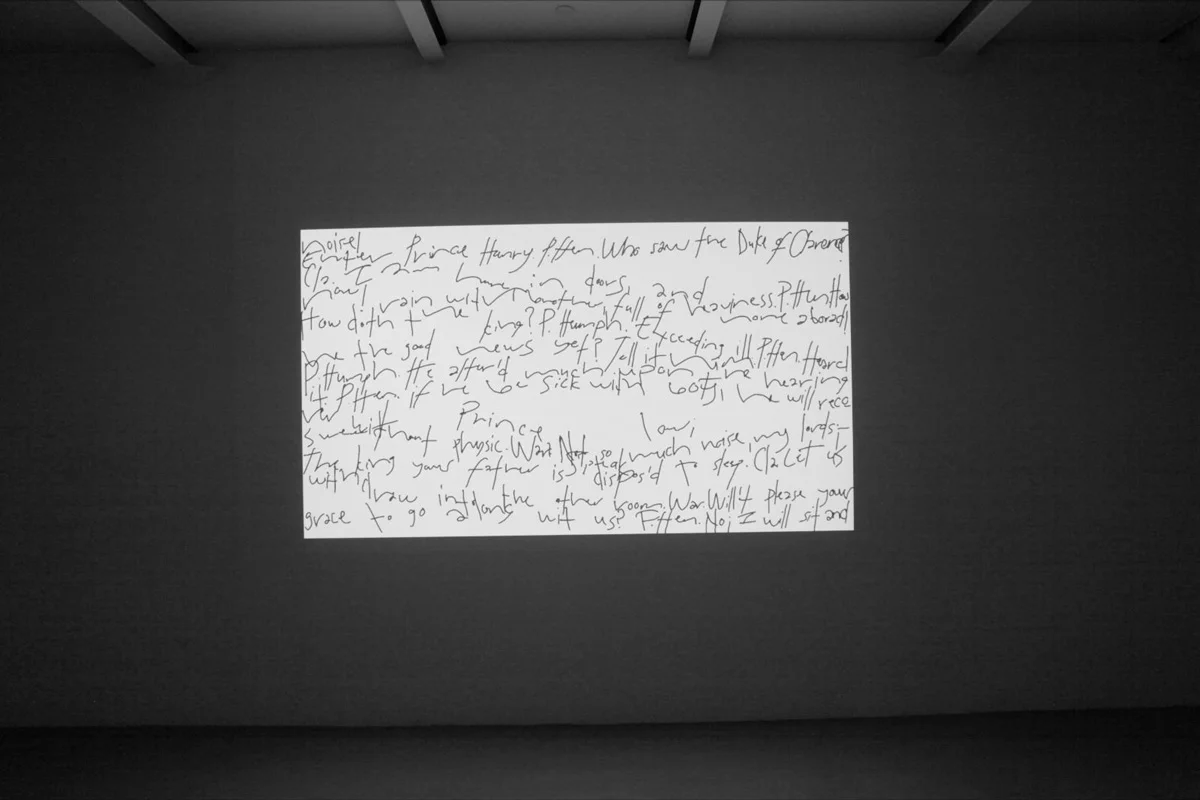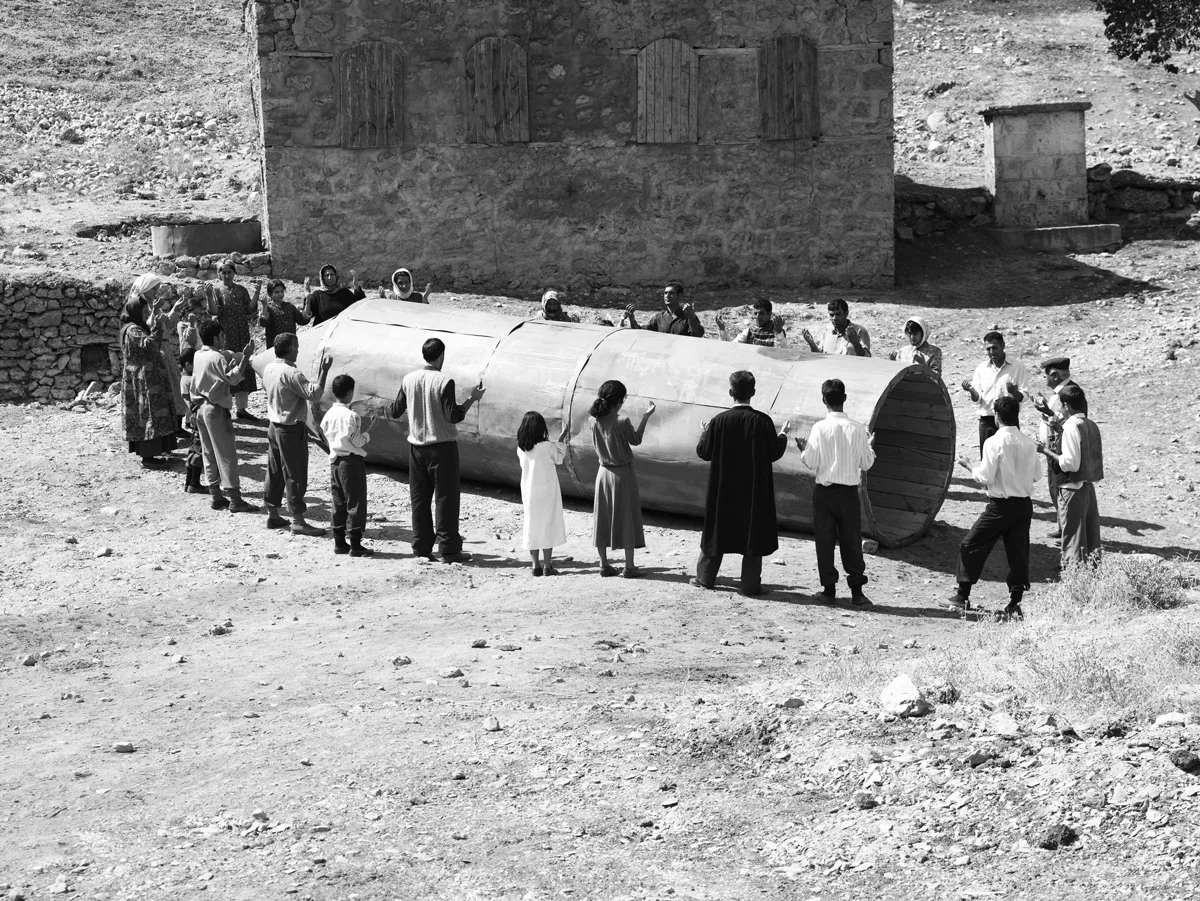
Still from _Journey To The Moon_, (2009). Courtesy the artist.

Still from _Journey To The Moon_, (2009). Courtesy the artist.

Still from _Journey To The Moon_, (2009). Courtesy the artist.

Still from _The Complete Works Of William Shakespeare_, produced by The Institute For The Readjustment Of Clocks, Istanbul, (2009). Courtesy the artist.

Still from _Journey To The Moon_, (2009). Courtesy the artist.
[](#)[](#)
Kutlug Ataman
“Art has to be about intelligence”\*—Where filmmaker and contemporary artist Kutlug Ataman rebounds from his 2011 interview with Phaidon Press into humbling 2012 praise from New York Times art critic Karen Rosenberg
In Pisces-eque fashion (mind you, astrology is pure bollocks), Kutlug Ataman—the Istanbul- born London-based narrative filmmaker swims along. His first film _The Serpent’s Tale_ (1994), an artful vampire romance, “has since”\*.1 become a reputable cult classic. But Ataman can play the high art card, too; in 1997, the Istanbul Biennale showcased his grueling eight-hour documentary _Semiha B. Unplugged_. Spanning the career of Turkish opera singer Semiha Berksoy—a notorious liar—the saga forces viewers to just watch, unencumbered by jurisprudent queries of authenticity.
In time, Ataman focuses on the geopolitical character of his region. In 2011, he states: “I have moved from people to community—how groups of people create their own common mythology, how we construct our knowledge of history and geography, how we re-write each other’s stories and how these stories are imposed on cultures.”\*.2 Move to 2012. Now, the New York Times writes about his first gallery show at Sperone Westwater, where Ataman “ruminates on the cultural and geopolitical forces transforming his home country, Turkey.”\*.3 The publication praises his conceptual film _The Complete Works of William Shakespeare_ for “delivering on its promise.”\*.4
In the film, zooming in continuous high speed, Ataman writes out every line of Shakespeare with a calligraphic pen. But, whereas the persona-driven Goldsmith tends to hang his small round-brimmed hat on a single idea, Ataman succeeds at intra-contextualization. Times art critic Karen Rosenberg compliments “Complete Works...” for its placement beside “English as a Second Language.” Here, a pair of Turkish schoolboys ”stammer” Edward Lear’s line poems.\*.5
Keep calm and tread water: Ataman’s not done paddling through aesthetic feats: on display this year at the Venice Biennale, Ataman’s 10,000 LCD-screen “portrait” of Turkish leader of industry, Sakip Sabancı. Marking the tenth anniversary since the famed businessman’s death, “Portrait of Sakip Sabancı” is a customizable and sublimating installation displaying the subtly shifting faces of 10,000 workers directly affected by Sabancı. This was his solution to the family’s request for a portrait. Reasoning? In a hardly watched YouTube interview, Ataman explains that he didn’t know how to paint.\*.6
#### **Can you articulate what it is like when you share a commissioned work with the commissioner? Fear, anxiety, joy, sublimity, what is happening emotionally within you as the artist?**
When will I get paid? Joking aside, for private commissions I prepare lengthy descriptions and drawings before I deliver. I show the commissioners these drawings in the beginning and then I don’t really have time to wait or to discuss anything. As for museum shows and biennials, my only judge is the public. So far I have been very successful with the public. I don’t have a formula. I don’t know how I do anything other than “just do it.”\*.7 I have something in my head, a vision, and I am very loyal to that vision. My loyalty is almost autistic. I am not able to change or accept any interventions whatsoever. Trust had been very important between myself and some great curators I was privileged to work with. If they trust me and leave me alone, we have a very happy opening. Harald, Okwui, Rosa, Glen, Adriano...we really had very few discussions with them. These are confident curators who trust the artists they select and this is one of the reasons why they are so good. I have one trick though. I like to converse with the crews that install the pieces. I get their opinions and impressions and criticisms. They are usually right because they do more exhibitions than any curators or artists. Practical information such as this is very useful I think. I also like to install my pieces usually at the end of the building if it is a group show. Folks who get tired come and sit at my piece and watch.
#### **“What are you working on at the moment?”\*.8**
The Sabancıs asked me to make a portrait of the late Mr. Sabancı with the aim of celebrating his achievements. My work had been about undoing icons and definitely not creating more icons. I had to devise a way of being true to the commissioner’s wishes, to Mr. Sabancı himself but also true to myself. After thinking for a while I came up with the idea of reconstructing a portrait without actually using the image of the subject of the portrait. Instead I concentrated on the meaning and purpose of any portrait. What were the building blocks of Mr. Sabancı? To me, his team, his workers, people he supported and who supported him. It occurred to me that it would be just therefore, to portray those thousands of men and women who made Mr. Sabancı. We had an open call and the response was great. We ended up with thousands of passport size photos which allowed us to create this mosaic image.
#### **How do you believe cinema and ideology are related?**
Nothing in life that is created by mankind can escape ideology, not even a tin of Campbell’s tomato soup. A pink coloured canvas is not more or less ideological than _Das Kapital_. _The Battle of Algiers_ is not more or less ideological than _Bridget Jones’s Diary_. Anything that we do as human beings is unable to escape ideology, even the pretense of rejecting all ideology.
Everything has a meaning or can have a meaning attached to it. Contemporary art makes use of these meanings, using objects as shorthand phrases, reinforcing, questioning, undoing, developing, destroying, creating these meanings in a myriad of ways. This activity is what reinforces or undoes ideology constantly. Culture, which also contains cinema and art, is the hot lava of our intellectual existence on this planet, constantly exploding, reshaping, bubbling, solidifying only to evolve one way or another endlessly.
#### **In a section of _Journey to the Moon_, your narrator discusses a story that cannot be told, should not be told, because it’s beyond explanation. It is “explained away,” per se. Do you find conversation about ideology to be itself like this, a taboo topic?**
Not at all. I am a filmmaker by formation. For me when I set out to tell a story, I must communicate to my audience that they are really privileged because they are about to enjoy something impossible. It is all about seduction. An artist must always know how to seduce their audience. I try many tricks and try to come up with a new one each time. The art world is like a brothel. Seduction is essential.
#### **Given the ability for almost anyone to create and replicate today, how do you define a truly creative gesture?**
A truly creative gesture is the artist’s ability to be him/herself and to continue creating him/herself and not the artwork itself. The artwork has always been an end product, an evidence of the crime. What is endlessly more seductive is the criminal, not the crime.
#### \* [“'Art is not about making a cheap joke at the expense of your subject’ - Kutluğ Ataman,” _Phaidon Press_, February 2011.](http://www.phaidon.com/agenda/art/articles/2011/february/09/art-is-not-about-making-a-cheap-joke-at-the-expense-of-your-subject-kutlu-ataman/)
#### \*.1 [Ramsey, L. “Theranos reportedly had a secret partnership worth $350 million that has since fallen apart,” _Business Insider_, November 2015.](http://www.businessinsider.com/theranos-safeway-partnership-is-reportedly-dissolving-2015-11)
#### \*.2 [_Phaidon Press_, February 2011.](http://www.phaidon.com/agenda/art/articles/2011/february/09/art-is-not-about-making-a-cheap-joke-at-the-expense-of-your-subject-kutlu-ataman/)
#### \*.3 [Rosenberg, K. “Kutlug Ataman: ‘Mesopotamian Dramaturgies,’” _New York Times_, December 2012.](http://www.nytimes.com/2012/12/14/arts/design/kutlug-ataman-mesopotamian-dramaturgies.html?_r=0)
#### \*.4 [Ibid.](http://www.nytimes.com/2012/12/14/arts/design/kutlug-ataman-mesopotamian-dramaturgies.html?_r=0)
#### \*.5 [Ibid.](http://www.nytimes.com/2012/12/14/arts/design/kutlug-ataman-mesopotamian-dramaturgies.html?_r=0)
#### \*.6 [\[la Biennale di Venezia Channel\]. (August 2015). Biennale Arte 2015 - Kutluğ Ataman. Retrieved from youtube.com/watch?v=YbHInrPMMcY.](https://www.youtube.com/watch?v=YbHInrPMMcY)
#### \*.7 “[Nike’s ‘Just do it’ slogan is based on a murderer’s last words, says Dan Wieden,” _Dezeen_, March 2015.](http://www.dezeen.com/2015/03/14/nike-just-do-it-slogan-last-words-murderer-gary-gilmore-dan-wieden-kennedy/)
\*.8 [_Phaidon Press_, February 2011.](http://www.phaidon.com/agenda/art/articles/2011/february/09/art-is-not-about-making-a-cheap-joke-at-the-expense-of-your-subject-kutlu-ataman/) † _Original question: Is there a joy in knowing people will have to look up to discover the installation “The Portrait of Sakıp Sabancı?” What motivated this decision?_
